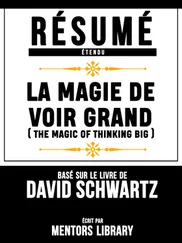Malcolm Gladwell - Blink - The Power of Thinking Without Thinking
Здесь есть возможность читать онлайн «Malcolm Gladwell - Blink - The Power of Thinking Without Thinking» весь текст электронной книги совершенно бесплатно (целиком полную версию без сокращений). В некоторых случаях можно слушать аудио, скачать через торрент в формате fb2 и присутствует краткое содержание. Жанр: Культурология, Психология, на английском языке. Описание произведения, (предисловие) а так же отзывы посетителей доступны на портале библиотеки ЛибКат.
- Название:Blink: The Power of Thinking Without Thinking
- Автор:
- Жанр:
- Год:неизвестен
- ISBN:нет данных
- Рейтинг книги:3 / 5. Голосов: 1
-
Избранное:Добавить в избранное
- Отзывы:
-
Ваша оценка:
- 60
- 1
- 2
- 3
- 4
- 5
Blink: The Power of Thinking Without Thinking: краткое содержание, описание и аннотация
Предлагаем к чтению аннотацию, описание, краткое содержание или предисловие (зависит от того, что написал сам автор книги «Blink: The Power of Thinking Without Thinking»). Если вы не нашли необходимую информацию о книге — напишите в комментариях, мы постараемся отыскать её.
Blink: The Power of Thinking Without Thinking — читать онлайн бесплатно полную книгу (весь текст) целиком
Ниже представлен текст книги, разбитый по страницам. Система сохранения места последней прочитанной страницы, позволяет с удобством читать онлайн бесплатно книгу «Blink: The Power of Thinking Without Thinking», без необходимости каждый раз заново искать на чём Вы остановились. Поставьте закладку, и сможете в любой момент перейти на страницу, на которой закончили чтение.
Интервал:
Закладка:
So far in Blink, I have talked about how extraordinarily powerful thin-slicing can be, and what makes thin-slicing possible is our ability to very quickly get below the surface of a situation. Thomas Hoving and Evelyn Harrison and the art experts were instantly able to see behind the forger’s artifice. Susan and Bill seemed, at first, to be the embodiment of a happy, loving couple. But when we listened closely to their interaction and measured the ratio of positive to negative emotions, we got a different story. Nalini Ambady’s research showed how much we can learn about a surgeon’s likelihood of being sued if we get beyond the diplomas on the wall and the white coat and focus on his or her tone of voice. But what happens if that rapid chain of thinking gets interrupted somehow? What if we reach a snap judgment without ever getting below the surface?
In the previous chapter, I wrote about the experiments conducted by John Bargh in which he showed that we have such powerful associations with certain words (for example, “Florida,” “gray,” “wrinkles,” and “bingo”) that just being exposed to them can cause a change in our behavior. I think that there are facts about people’s appearance—their size or shape or color or sex—that can trigger a very similar set of powerful associations. Many people who looked at Warren Harding saw how extraordinarily handsome and distinguished-looking he was and jumped to the immediate—and entirely unwarranted—conclusion that he was a man of courage and intelligence and integrity. They didn’t dig below the surface. The way he looked carried so many powerful connotations that it stopped the normal process of thinking dead in its tracks.
The Warren Harding error is the dark side of rapid cognition. It is at the root of a good deal of prejudice and discrimination. It’s why picking the right candidate for a job is so difficult and why, on more occasions than we may care to admit, utter mediocrities sometimes end up in positions of enormous responsibility. Part of what it means to take thin-slicing and first impressions seriously is accepting the fact that sometimes we can know more about someone or something in the blink of an eye than we can after months of study. But we also have to acknowledge and understand those circumstances when rapid cognition leads us astray.
Over the past few years, a number of psychologists have begun to look more closely at the role these kinds of unconscious—or, as they like to call them, implicit—associations play in our beliefs and behavior, and much of their work has focused on a very fascinating tool called the Implicit Association Test (IAT). The IAT was devised by Anthony G. Greenwald, Mahzarin Banaji, and Brian Nosek, and it is based on a seemingly obvious—but nonetheless quite profound—observation. We make connections much more quickly between pairs of ideas that are already related in our minds than we do between pairs of ideas that are unfamiliar to us. What does that mean? Let me give you an example. Below is a list of words. Take a pencil or pen and assign each name to the category to which it belongs by putting a check mark either to the left or to the right of the word. You can also do it by tapping your finger in the appropriate column. Do it as quickly as you can. Don’t skip over words. And don’t worry if you make any mistakes.
Male....... Female
.....John.....
.....Bob......
.....Amy......
.....Holly....
.....Joan.....
.....Derek....
.....Peggy....
.....Jason....
.....Lisa.....
.....Matt.....
.....Sarah....
That was easy, right? And the reason that was easy is that when we read or hear the name “John” or “Bob” or “Holly,” we don’t even have to think about whether it’s a masculine or a feminine name. We all have a strong prior association between a first name like John and the male gender, or a name like Lisa and things female.
That was a warm-up. Now let’s complete an actual IAT. It works like the warm-up, except that now I’m going to mix two entirely separate categories together. Once again, put a check mark to either the right or the left of each word, in the category to which it belongs.
Male or Career.... Female or Family
....................Lisa..........................
....................Matt..........................
....................Laundry.......................
....................Entrepreneur..................
....................John..........................
....................Merchant......................
....................Bob...........................
....................Capitalist....................
....................Holly.........................
....................Joan..........................
....................Home..........................
....................Corporation...................
....................Siblings......................
....................Peggy.........................
....................Jason.........................
....................Kitchen.......................
....................Housework.....................
....................Parents.......................
....................Sarah.........................
....................Derek.........................
My guess is that most of you found that a little harder, but that you were still pretty fast at putting the words into the right categories. Now try this:
Male or Career...... Female or Family
...............Babies..............
...............Sarah...............
...............Derek...............
...............Merchant............
...............Employment..........
...............John................
...............Bob.................
...............Holly...............
...............Domestic............
...............Entrepreneur........
...............Office..............
...............Joan................
...............Peggy...............
...............Cousins.............
...............Grandparents........
...............Jason...............
...............Home................
...............Lisa................
...............Corporation.........
...............Matt................
Did you notice the difference? This test was quite a bit harder than the one before it, wasn’t it? If you are like most people, it took you a little longer to put the word “Entrepreneur” into the “Career” category when “Career” was paired with “Female” than when “Career” was paired with “Male.” That’s because most of us have much stronger mental associations between maleness and career-oriented concepts than we do between femaleness and ideas related to careers. “Male” and “Capitalist” go together in our minds a lot like “John” and “Male” did. But when the category is “Male or Family,” we have to stop and think—even if it’s only for a few hundred milliseconds—before we decide what to do with a word like “Merchant.”
When psychologists administer the IAT, they usually don’t use paper and pencil tests like the ones I’ve just given you. Most of the time, they do it on a computer. The words are flashed on the screen one at a time, and if a given word belongs in the left-hand column, you hit the letter e, and if the word belongs in the right-hand column, you hit the letter i. The advantage of doing the IAT on a computer is that the responses are measurable down to the millisecond, and those measurements are used in assigning the test taker’s score. So, for example, if it took you a little bit longer to complete part two of the Work/Family IAT than it did part one, we would say that you have a moderate association between men and the workforce. If it took you a lot longer to complete part two, we’d say that when it comes to the workforce, you have a strong automatic male association.
Читать дальшеИнтервал:
Закладка:
Похожие книги на «Blink: The Power of Thinking Without Thinking»
Представляем Вашему вниманию похожие книги на «Blink: The Power of Thinking Without Thinking» списком для выбора. Мы отобрали схожую по названию и смыслу литературу в надежде предоставить читателям больше вариантов отыскать новые, интересные, ещё непрочитанные произведения.
Обсуждение, отзывы о книге «Blink: The Power of Thinking Without Thinking» и просто собственные мнения читателей. Оставьте ваши комментарии, напишите, что Вы думаете о произведении, его смысле или главных героях. Укажите что конкретно понравилось, а что нет, и почему Вы так считаете.












